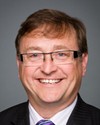Certainly, Madam Chair.
The system is by no means perfect to verify firearms, but I wouldn't qualify it as completely inadequate either. To understand how this works, if I may take a moment, first of all there's a central registry where all of the firearms registration information is contained. For any entry to make it into that registry--for instance, if you acquired a firearm and someone verified it for you and said it's “this type” of firearm--that information has to be communicated to the central registry. It is not taken at face value at all.
We have something called the firearms reference table, which is developed by the RCMP with the cooperation of the Firearms Centre and is a comprehensive listing of every make, model, and variation of firearm in the country. So when you come in and say, I've got a Cooey machine gun, there's no way in the world that this firearms reference table is going to say there is a Cooey machine gun. Well, we wouldn't let you keep a machine gun anyway, probably.
So there are checks in the system. Also, we do have expert verifiers at the registry who are able, particularly for obscure firearms, to make those distinctions.
We do rely on what is called a volunteer network of verifiers. This means when you acquire a firearm, you have to take it to an approved verifier on a voluntary basis--i.e., the person is not compensated--who will look at it and attest that this is the firearm you say it is.



